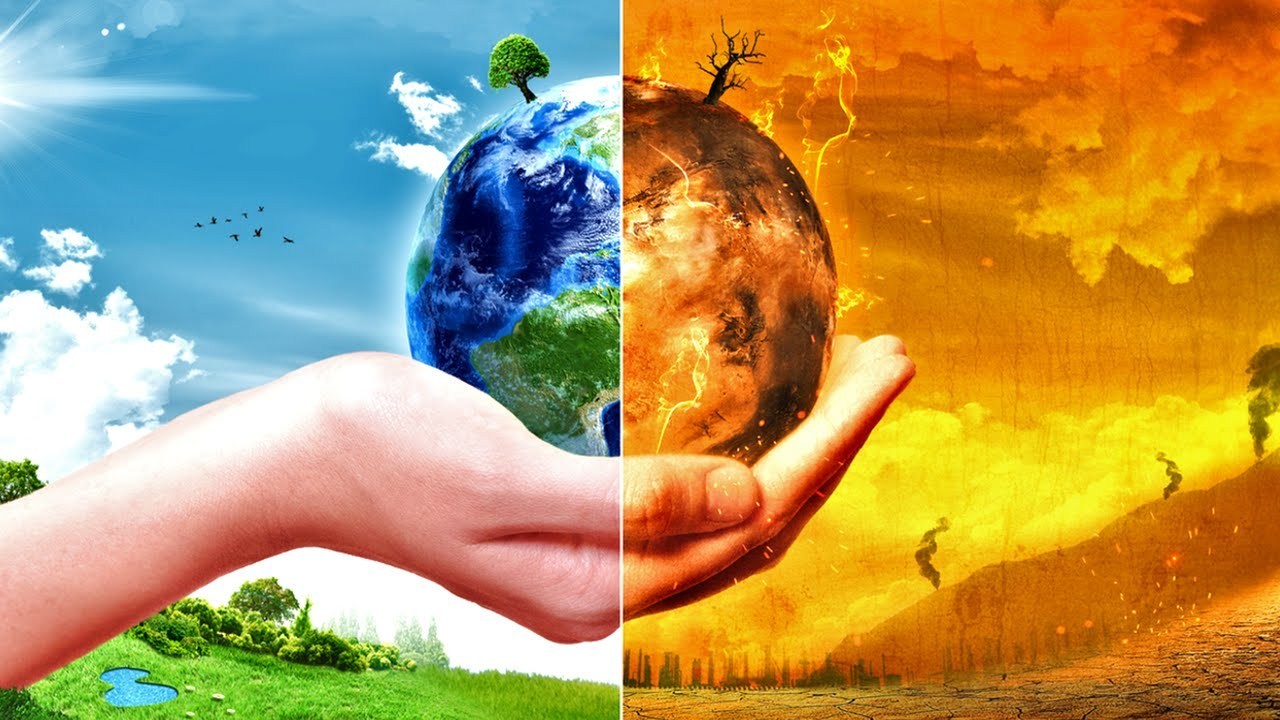
There is widespread agreement that a number of very serious environmental problems together threaten the future of our planet. These problems inter-act with each other, are related to each other and at a practical level, we and other species have to bear their combined burden at the same time. Despite this rather obvious reality the response to these problems is often very segregated. We have different conventions, conferences, frameworks and platforms for different serious environmental problems which are unable to take a comprehensive view of the total combined impact. This is a serious shortcoming which may prove very costly in the near fuure.
So it is very useful to look at the work of those scientists who have tried to take a more comprehensive and well-inegrated view of nine of the most serious environmental pronlems at global level. The reference here is to the work of scientists at the Stockholm Resilience Centre (SRC). Johan Rockstrom, director of SRC says “The human pressure on the Earth System has reached a scale where abrupt global environmental change can no longer be excluded. To continue to live and operate safely, humanity has to stay away from critical ‘hard-wired´ thresholds in the Earth’s environment, and respect the nature of the planet’s climatic, geophysical, atmospheric and ecological processes.”
Summarising the results of this work, the SRC says, “The group of scientists including Hans Joachim Schellnhuber, Will Steffen, Katherine Richardson, Jonathan Foley and Nobel Laureate Paul Crutzen, have attempted to quantify the safe biophysical boundaries outside which, they believe, the Earth System cannot function in a stable state, the state in which human civilizations have thrived…The scientists first identified the Earth System processes and potential biophysical thresholds, which, if crossed, could generate unacceptable environmental change for humanity. They then proposed the boundaries that should be respected in order to reduce the risk of crossing these thresholds…The nine boundaries identified were:climate change, stratospheric ozone, land use change, freshwater use, biological diversity, ocean acidification, nitrogen and phosphorus inputs to the biosphere and oceans, aerosol loading and chemical pollution…The study suggests that three of these boundaries (climate change, biological diversity and nitrogen input to the biosphere) may already have been transgressed. In addition, it emphasizes that the boundaries are strongly connected — crossing one boundary may seriously threaten the ability to stay within safe levels of the others.”
In this context a key research paper titled “Planetary Boundaries: Exploring the Safe Operations Space for Humanity” authored by Johan Rockstrom and 26 other scientists has been published in the journal Ecology and Society. This paper says “…Anthropogenic pressures on the Earth System have reached a scale where abrupt global environmental change can no longer be excluded. We propose a new approach to global sustainability in which we define planetary boundaries within which we expect that humanity can operate safely. Transgressing one or more planetary boundaries may be deleterious or even catastrophic due to the risk of crossing thresholds that will trigger non-linear, abrupt environmental change within continental- to planetary-scale systems…The exponential growth of human activities is raising concern that further pressure on the Earth System could destabilize critical biophysical systems and trigger abrupt or irreversible environmental changes that would be deleterious or even catastrophic for human well-being. This is a profound dilemma because the predominant paradigm of social and economic development remains largely oblivious to the risk of human-induced environmental disasters at continental to planetary scales…There is ample evidence from local to regional-scale ecosystems, such as lakes, forests, and coral reefs, that gradual changes in certain key control variables (e.g., biodiversity, harvesting, soil quality, freshwater flows, and nutrient cycles) can trigger an abrupt system state change when critical thresholds have been crossed.”
What this paper says about air and chemical pollution has specific references to children. On air pollution it says that its various health effects “…convert to about 800000 premature deaths and an annual loss of 6.4 million life years, predominantly in developing Asian countries. Mortality due to exposure to indoor smoke from solid fuels is about double that of urban air pollution (roughly 1.6 million deaths), and exposure to occupational airborne particulates accounts for roughly 300 000 deaths per year, mainly in developing countries.”
On a concluding note this paper says about the inadequacy of existing efforts to cope with new and extremely serious problems, “Transgressing one boundary may, furthermore, seriously threaten the ability to stay within safe levels for other boundaries. This means that no boundary can be transgressed for long periods without jeopardizing the safe operating space for humanity. Humanity thus needs to become an active steward of all planetary boundaries—the nine identified in this paper and others that may be identified in the future—in order to avoid risk of disastrous long-term social and environmental disruption…The knowledge gaps are disturbing. There is an urgent need to identify Earth System thresholds, to analyze risks and uncertainties, and, applying a precautionary principle, to identify planetary boundaries to avoid crossing such undesired thresholds. Current governance and management paradigms are often oblivious to or lack a mandate to act upon these planetary risks despite the evidence of an acceleration of anthropogenic pressures on the biophysical processes of the Earth System. “
Thus from the point of view of our future generations the most important issue is the many sided ecological crisis which is now assuming the form of a survival crisis. If we are truly concerned about the future of our children (and their children) then we should start giving the top- most priority to these issues. When we compare this need with the petty issues which dominate the current discourse, then we realize the urgency of genuine reforms. We owe it to our children and the next generation to initiate necessary changes and reforms before it is too late.
Moreover once we take a comprehensive view of the most serious environmental problems and try to follow them to their logical conclusion, two very clear conclusions emerge. Firstly it is just not possible to resolve these very serious problems without securing a firm base for world peace, avoiding wars, reducing weapons and military expenditure very drastically and without eliminating weapons of mass destruction.
Secondly, at a time of environmental problems becoming so serious, we just cannot afford massive inequalities as well as the waste and luxury consumption splurge which big inequalities bring. While resolving environmental problems we have to meet the basic needs of all people and for this the need for reducing inequalities today is much higher today than at any previous historical time.
Hence firstly it is very important to take an integrated view of all serious environmental problems and secondly it is very important to link environmental issues with peace and justice concerns.
Bharat Dogra is Honorary Convener, Campaign to Save Earth Now. His recent books include Protecting Earth for Children and Planet in Peril.
















































